Whatever their opinion of Jackson, Louisianans through the nineteenth century enthusiastically or begrudgingly commemorated the Hero of New Orleans in pamphlets, banknotes, and local landmarks. To this day, Jackson’s name and image live on in some of the Crescent City’s most beloved places, brands, and customs.
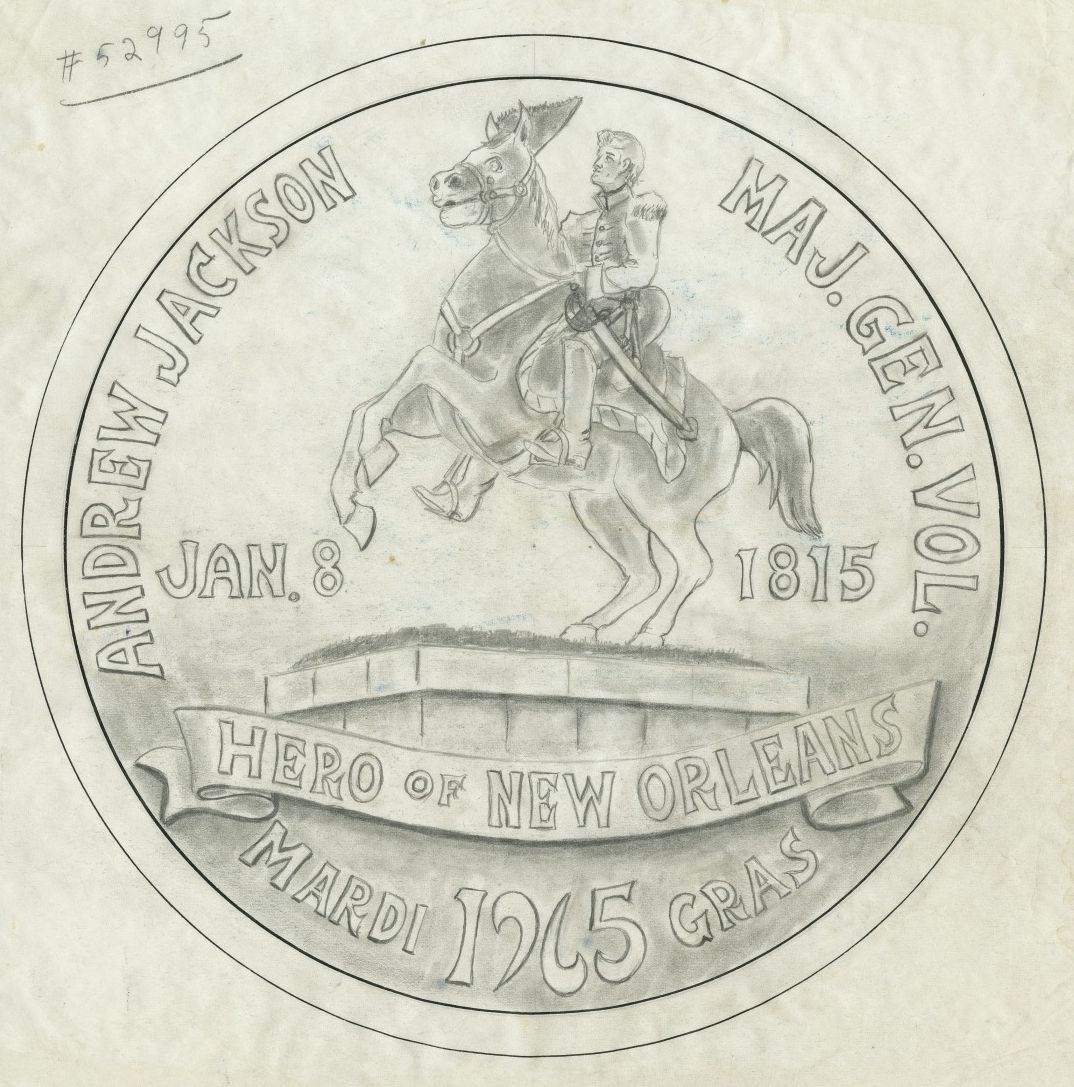
Mardi Gras doubloon design
1964; pencil and ink
by Herbert Alvin Sharpe, designer
The Historic New Orleans Collection, 1978.62
The 150th anniversary of the Battle of New Orleans inspired this design for a carnival souvenir doubloon. Mardi Gras parade floats in subsequent years have, from time to time, included representations of the famous general or his statue in Jackson Square.
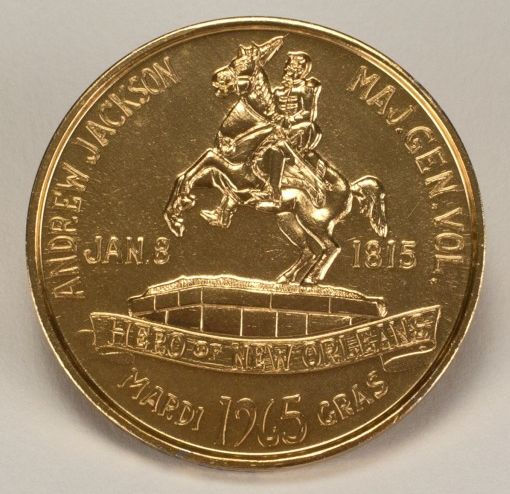
Mardi Gras doubloon
1965; gold-anodized aluminum
by the Krewe of Elks-Orleanians, distributor
The Historic New Orleans Collection, 2014.0184.2
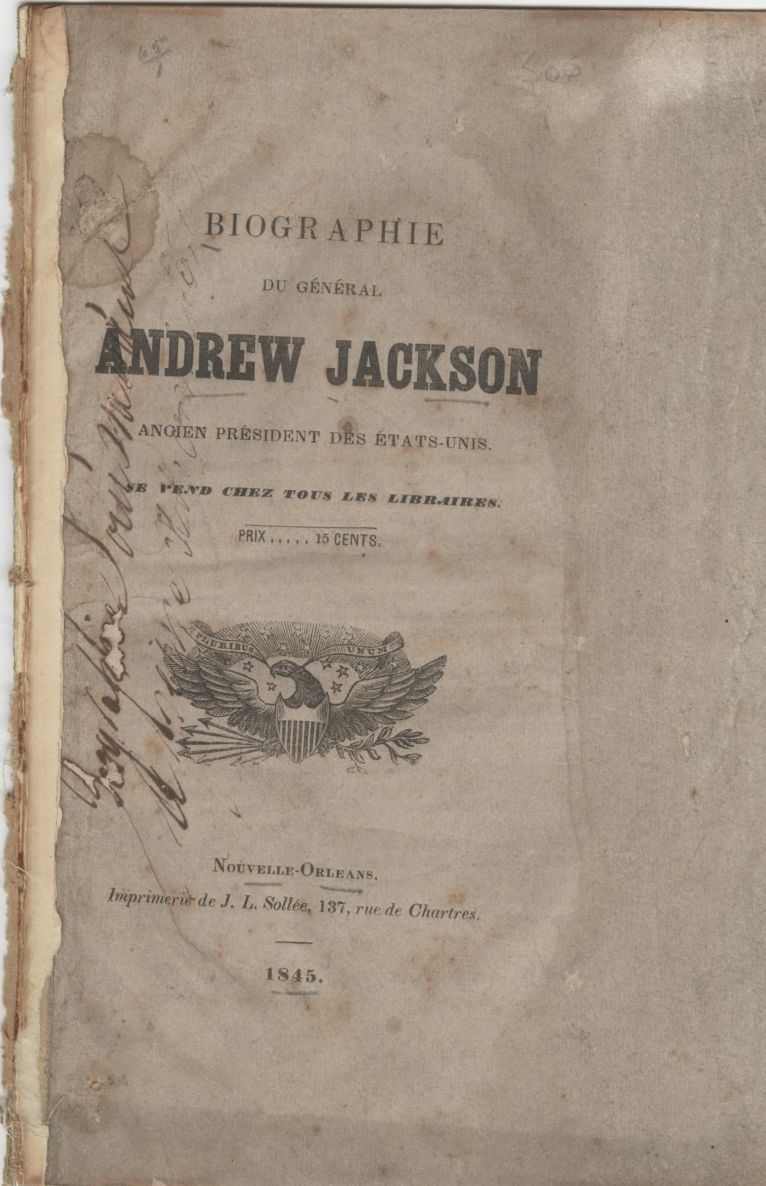
Biographie de Général Andrew Jackson, ancien président des Etats-unis
by Amédée Théodore Bouis, author
New Orleans: J. L. Sollée, 1845
The Historic New Orleans Collection, 2008.0271
This New Orleans edition of a pamphlet originally published anonymously in Paris in 1841 and 1842 credits Amédée Théodore Bouis of Louisiana as its author. A final, brief paragraph mentions Jackson's recent death and indicates that this edition was printed to memorialize the late president.
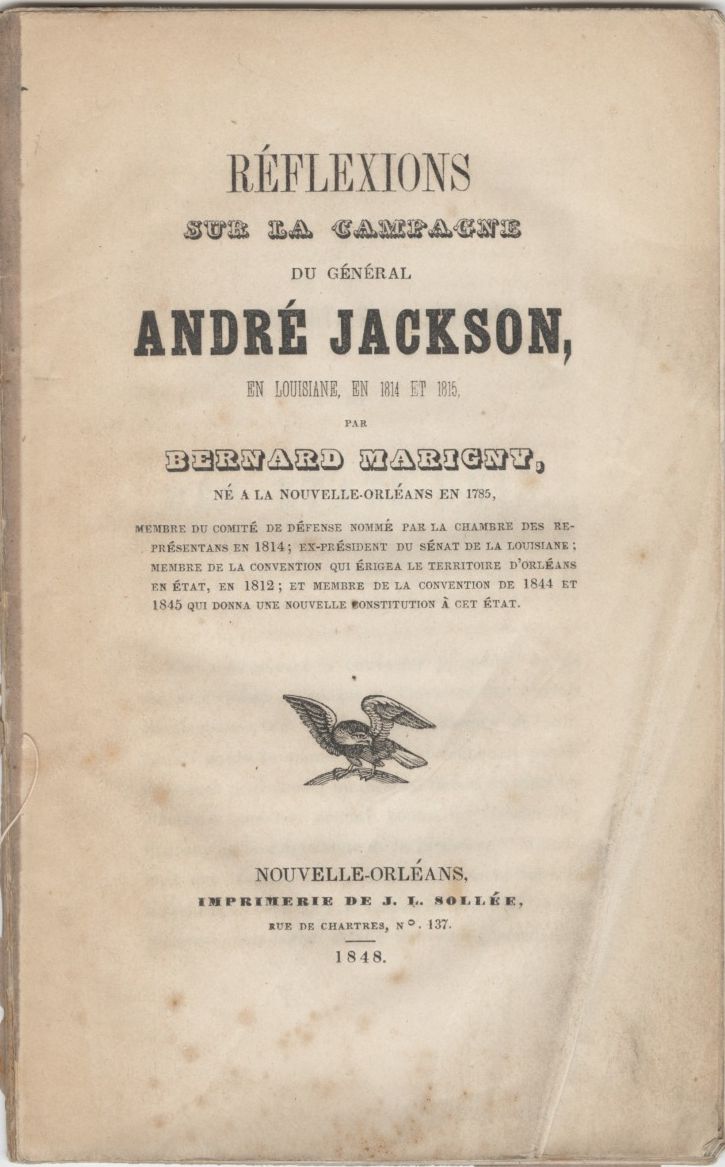
Réflexions sur la campagne du Général André Jackson en Louisiane, en 1814 et 1815
by Bernard Marigny, author
New Orleans: J. L. Sollée, 1848
The William C. Cook War of 1812 in the South Collection at The Historic New Orleans Collection, MSS 557, 2001-106-L.1
Some members of New Orleans's French-speaking population bitterly resented Jackson's suspicions of their loyalty in 1814 and 1815. The locally famous Creole legislator Bernard Marigny argued that he and his fellow French-speaking Louisianans stood by the general and deserved a share of his famous victory.
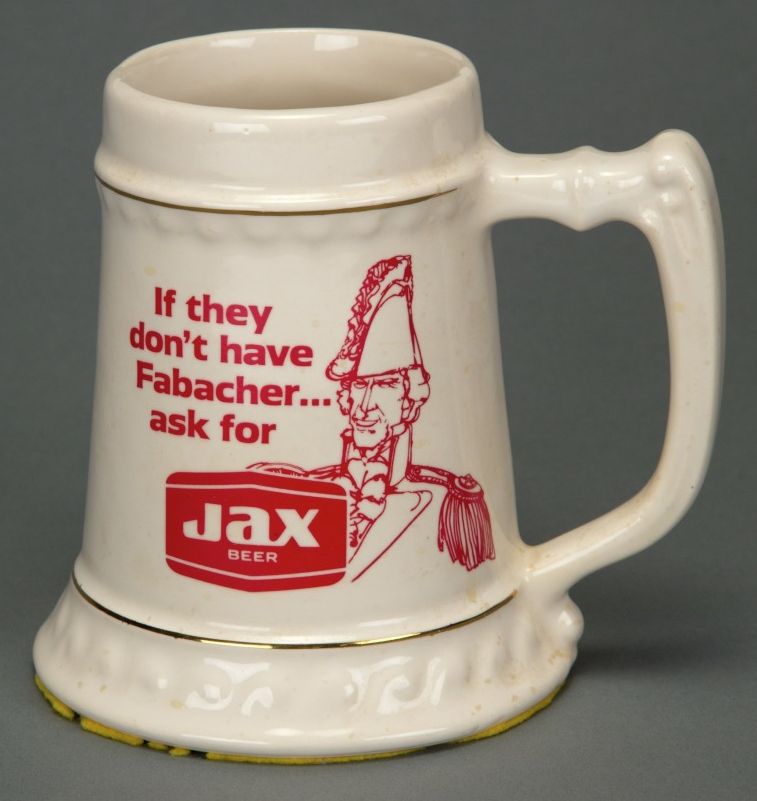
JAX beer mug
ca. 1980; gilt decoration and transfer print on glazed porcelain
by Jackson Brewing Company, distributor
The Historic New Orleans Collection, 2003.0184.1
Jackson Brewing Company was founded on the upriver corner of Jackson Square in 1891 and subsequently operated by the Fabacher family, whose range of brews included a beer called Fabacher. The brewery purchased the rights to the "JAX" beer name from a Jacksonville, Florida, company in 1956, and it soon became the leading beer in the local market. The company closed in 1974.
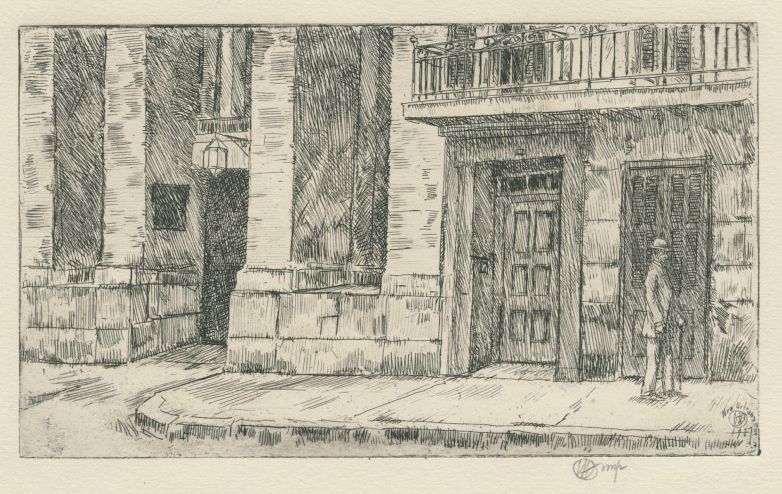
Gen. Jackson House
1927; etching
by Frederick Childe Hassam, etcher
The Historic New Orleans Collection, 2014.0142
The so-called Jackson House at 619 St. Peter Street occupies part of the site of the colonial guardhouse and prison demolished in 1837. The house was built as a residential structure two years after Jackson last visited New Orleans in January of 1840. It is now part of the Louisiana State Museum.
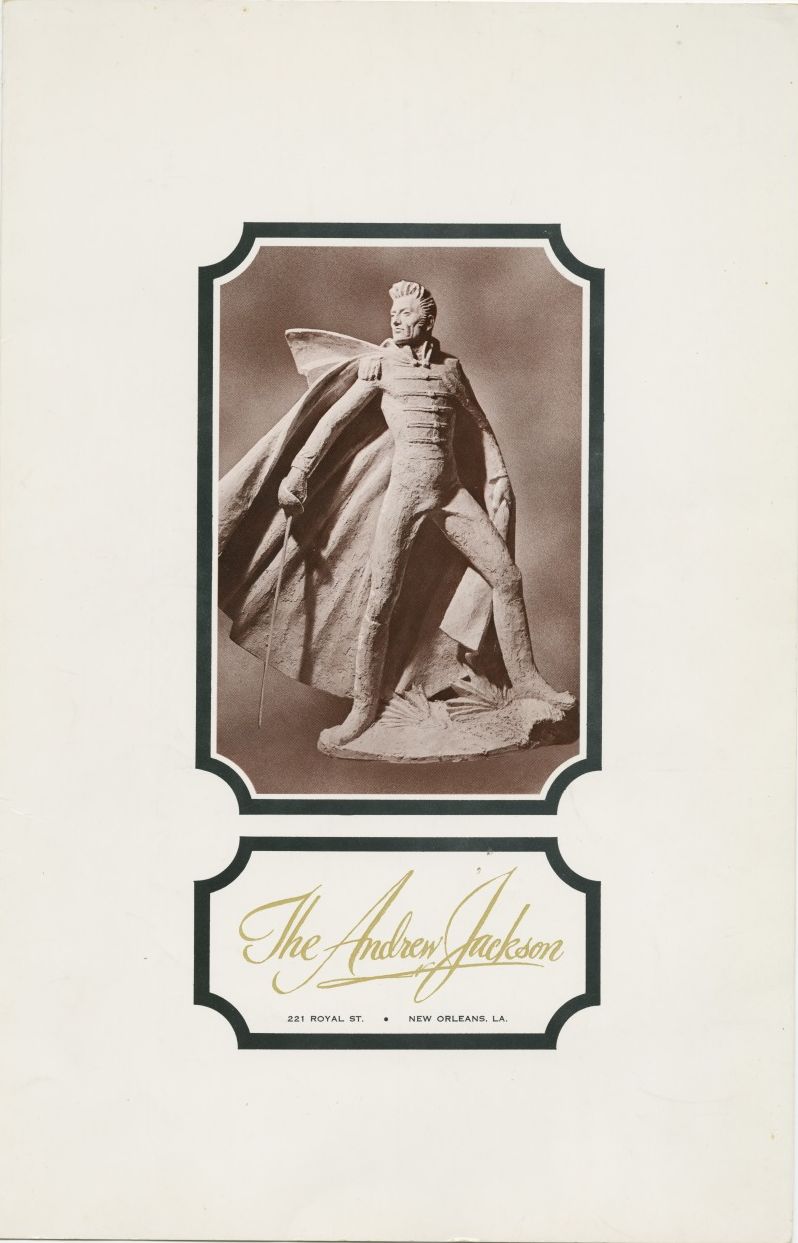
Menu from the Andrew Jackson Restaurant, formerly at 221 Royal Street
ca. 1975; halftone on card
The Historic New Orleans Collection, gift of William C. Cook, MSS 557, 2008.0226.2
The Andrew Jackson restaurant opened in the French Quarter on June 26, 1964. Prominent on the front cover is a photograph of a life-sized Enrique Alferez statue of Jackson that was displayed at the restaurant; the back cover includes a brief essay on Jackson by local author Harnett T. Kane (1910–1984).
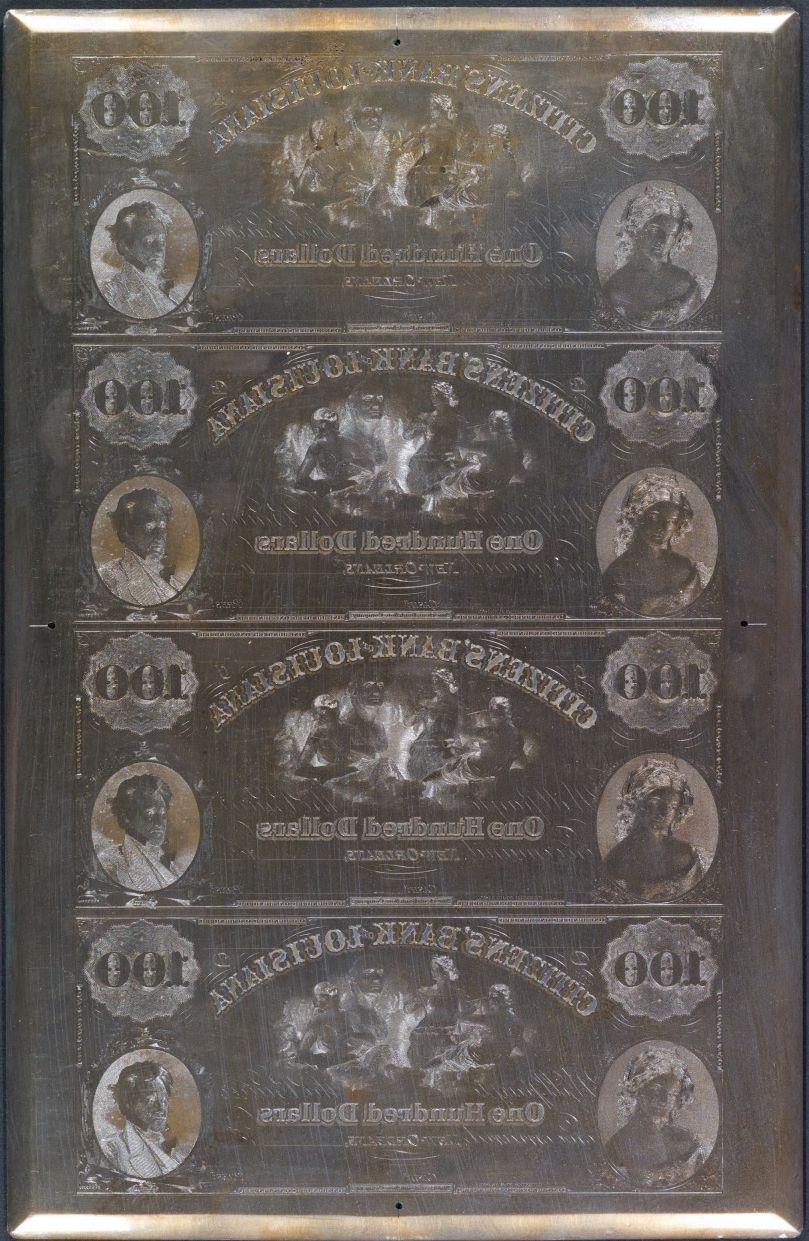
Printing plate for a sheet of $100 banknotes from the Citizens’ Bank of Louisiana
patented 1857; steel
by the American Bank Note Company, engraver
The Historic New Orleans Collection, gift of Lee H. Schlesinger, 1998.7.8
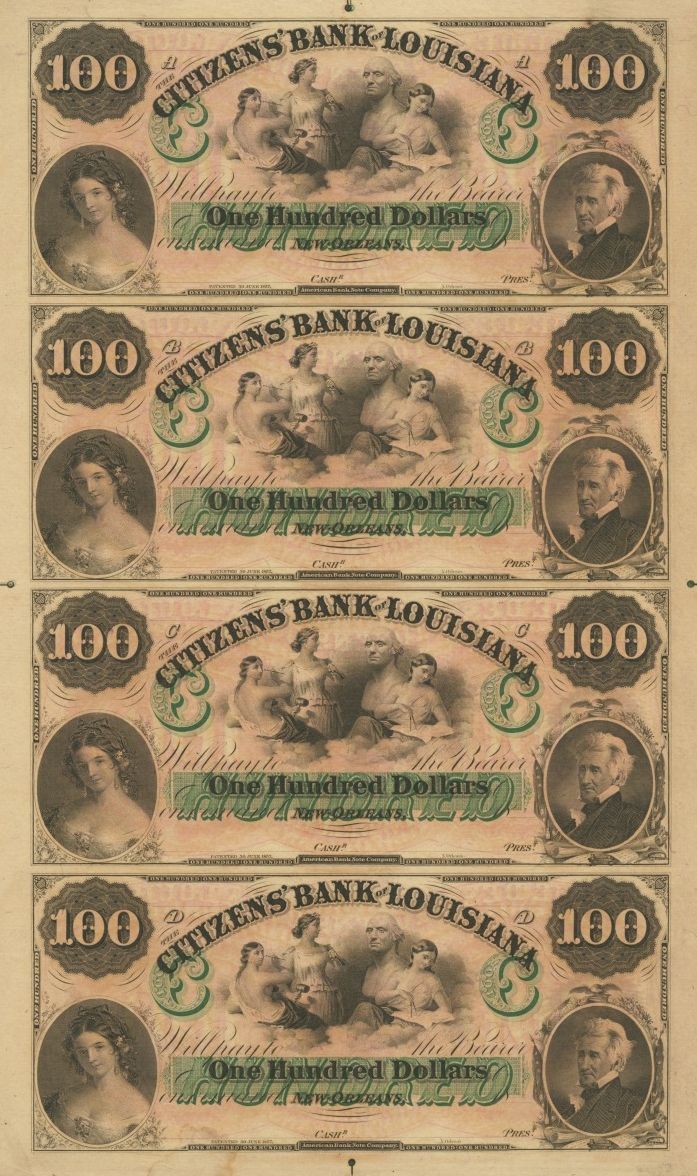
Sheet of $100 banknotes from the Citizens’ Bank of Louisiana
patented 1857; engraving
by the American Bank Note Company, printer
The Historic New Orleans Collection, 1974.15.8
Until the National Banking Act of 1863, the federal government did not issue paper money. Instead, most banknotes in circulation were printed by state-chartered private entities and redeemable for gold and silver. These $100 notes from the Citizens' Bank of Louisiana feature portraits of Old Hickory and an unidentified young woman in oval frames, as well as a trio of Muses with a bust of George Washington.
